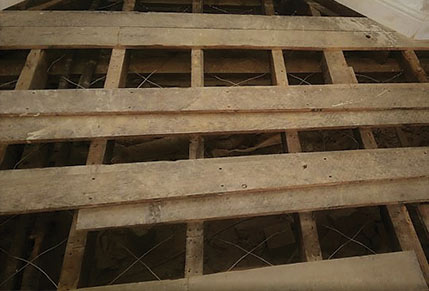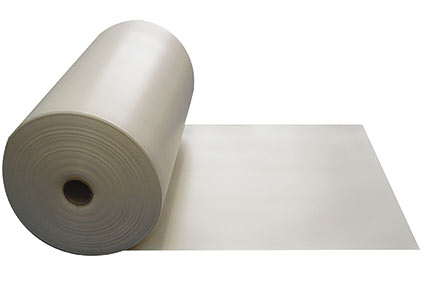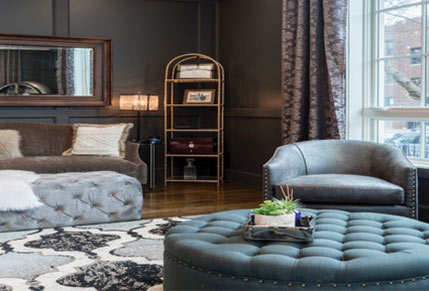Back to DIY Advice
9 Smart Ways to Insulate Your Home and Save Energy

Insulating your home isn’t just about staying warm in winter — it’s one of the smartest ways to reduce your energy bills, improve comfort, and make your home more environmentally friendly. Whether you live in a period property or a modern flat, there are many practical steps you can take to keep heat in and cold out.
Below, we’ve listed 9 effective ways to insulate your home, ranging from simple DIY fixes to more advanced upgrades. Many of these can be tackled room by room, helping you improve efficiency without major disruption or expense.
1. Add Underfloor Insulation
If you have suspended timber floors — common in older homes — a significant amount of heat can escape through the gaps beneath your floorboards. Adding underfloor insulation is a highly effective way to reduce heat loss and improve energy efficiency.
Insulation materials such as mineral wool, rigid boards, or reflective foil can be installed between the joists beneath the floor. This method creates a thermal barrier that helps retain warmth during colder months while also keeping floors cooler in summer.
While it’s possible to insulate under floors as a DIY project, accessing the void beneath the floor can be difficult in some homes. For best results, consider having a professional assess and install the right solution for your floor structure.
2. Insulate Floorboards from Above
If accessing the underside of your floor isn’t practical, you can still improve insulation from above. This involves lifting the floorboards and placing insulation directly between the joists. Common choices include PIR boards or natural fibre insulation, which provide excellent thermal resistance without adding too much height.
In some cases, especially when fitting new floors, you can also use insulated underlays that add a thermal layer beneath laminate, engineered, or LVT flooring. These are ideal for reducing both heat loss and sound transfer.
This method is best done during renovation or when new flooring is being installed, making it a convenient way to combine insulation and aesthetic upgrades at the same time.
3. Seal Gaps in Wooden Floors

Even small gaps between floorboards can allow cold air to enter and warm air to escape, leading to noticeable draughts and increased energy bills. Sealing these gaps is a quick and cost-effective way to improve insulation in rooms with exposed wood floors.
There are several ways to fill floorboard gaps, including flexible gap fillers, wood slivers, and draught-proofing strips. These products are designed to move with the natural expansion and contraction of timber flooring, maintaining an airtight seal year-round.
For a more seamless and durable result, professional floor gap filling services can restore both the comfort and visual appeal of your flooring. It’s an ideal option if your floorboards are showing signs of wear or have uneven spacing.
4. Use Rugs and Floor Coverings
While not a permanent solution, placing rugs and heavy floor coverings over wooden or tiled floors can provide a noticeable improvement in warmth and comfort, especially in winter. Rugs help trap heat and act as an additional layer of insulation between your feet and the cold floor.
This is a great option for renters or those seeking a quick, low-cost fix. In areas with underfloor heating, make sure to choose rugs that are compatible with heat systems to avoid blocking thermal efficiency.
Rugs also help reduce draughts from any minor gaps in old floorboards and add a soft, stylish touch to living spaces or bedrooms.
5. Upgrade Loft Insulation
Since heat naturally rises, a poorly insulated loft or attic can result in substantial energy loss. Upgrading your loft insulation is one of the most effective ways to retain warmth and lower heating bills throughout the year.
UK building regulations typically recommend a minimum of 270mm of loft insulation, using materials such as mineral wool rolls, rigid boards, or loose-fill insulation. This can be installed between and over joists to form a thick thermal barrier.
If your loft is already insulated, it’s worth checking whether the existing material has compacted over time or no longer meets current standards. Topping up or replacing outdated insulation can deliver long-term savings and comfort improvements.
6. Wall Insulation (Internal & External)
Walls account for a significant portion of heat loss in most homes, especially in older buildings with solid wall construction. Depending on your property type, you may benefit from either internal or external wall insulation.
Internal wall insulation involves fitting rigid insulation boards or stud walls lined with mineral wool on the inside of external walls. This method is useful for retrofit projects, but can slightly reduce room size.
External wall insulation adds a weatherproof layer of insulation and render to the outside of your home. It’s ideal for improving thermal efficiency without affecting indoor space and can also refresh the exterior appearance.
For cavity wall homes, professional cavity fill insulation (using beads or foam) can also deliver excellent energy savings with minimal disruption.
7. Draught-Proof Windows and Doors
Windows and doors are some of the most common areas for heat loss and cold air infiltration. Proper draught-proofing can make a noticeable difference in comfort and energy efficiency, especially during winter months.
Simple DIY solutions like self-adhesive foam strips, rubber seals, door brushes, and keyhole covers are affordable and easy to install. These products block unwanted air movement while still allowing normal use of doors and windows.
For older or single-glazed windows, consider installing secondary glazing film or magnetic panels to add an extra insulating layer. Even thick, well-fitted curtains can help reduce draughts in these areas.
8. Install Insulated Curtains or Thermal Blinds

Windows are a major source of heat loss, particularly in older homes with single glazing or poorly sealed frames. Installing insulated curtains or thermal blinds is a quick and effective way to improve energy retention without major renovation work.
These window treatments use thick, multi-layered fabrics or reflective linings to reduce heat transfer through glass. They also help keep your home cooler in summer by blocking out excess heat and sunlight.
For best results, make sure curtains or blinds extend beyond the window frame and are drawn closed during cold evenings. This creates an insulating pocket of air that slows down heat loss and adds to the overall comfort of your space.
9. Consider Insulated Plasterboard
For homes with cold interior walls — especially those built with solid brick or stone — insulated plasterboard offers a practical solution to boost insulation without extensive structural work.
This material combines plasterboard with a layer of rigid insulation, which is fixed directly to internal walls. It helps to reduce heat loss and can improve the overall warmth of a room, particularly in older buildings with no cavity walls.
Although it does reduce room size slightly, insulated plasterboard is ideal for renovations or extensions where you want to upgrade thermal performance discreetly. It can also be used alongside vapour barriers to prevent condensation issues.
Bonus Tip – Use Reflective Radiator Panels
If your radiators are mounted on external walls, a lot of heat could be escaping directly through the wall instead of warming your room. Reflective radiator panels are a simple and affordable way to improve heating efficiency with minimal effort.
These thin, foil-backed panels are installed behind your radiators to reflect heat into the room rather than letting it escape outward. They’re especially effective in older properties and can be fitted without removing the radiator.
While they won’t replace proper insulation, radiator reflectors are a smart addition to your overall energy-saving strategy—and a great DIY project that delivers results.
Conclusion
Improving your home’s insulation doesn’t have to be overwhelming or expensive. From sealing gaps in wooden floors to upgrading your loft and adding thermal curtains, even small changes can lead to noticeable improvements in comfort and energy savings.
Start with the areas that are easiest to access or most prone to heat loss, then build up your efforts over time. Whether you take the DIY route or work with professionals, good insulation is one of the smartest investments you can make in your home.
Need expert help with floor insulation, gap filling, or flooring upgrades? Book a free site visit or get in touch with our team for tailored advice and professional service.